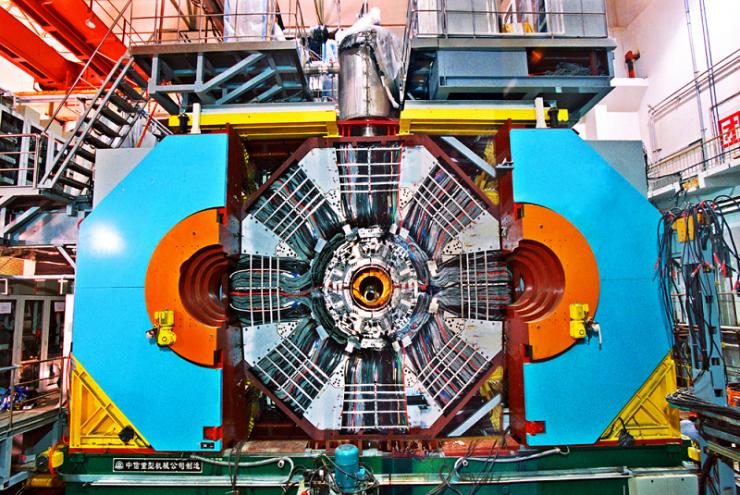
Looks like physicists may be making room for new kinds of particles soon.
Physicists working at two different particle accelerators -- the Belle experiment in Japan and the Beijing Spectrometer Experiment (BESIII) in China (pictured above) -- have indepedently found what may be a type of matter that's not only never been seen, but never been predicted: a particle made of four quarks.
Quarks are elementary particles that form subatomic particles like protons and neutrons. They come in six "flavors" -- up, down, strange, charm, bottom and top (and each of those has its own antimatter counterpart) -- and all the ways that they can possibly fit together to create other particles is still somehwat of a mystery, in part because the main theory on how quarks interact, known as quantum chromodynamics (QCD), is a very tough nut to crack.
"QCD was a great evolution in our understanding of matter — in fact it got a Nobel Prize — but people still can't do any calculations with it because it's so complicated," said Leo Piilonen, a physicist at Virginia Tech who also serves as a spokesman for the Belle experiment. "[This discovery] is helping us to understand QCD better."The potential new four-quark particle, dubbed Z_c(3900), was discovered while physicists examined the decay of Y(4260) particles in their particle accelerators. As those particles disintegrated, they would sometimes recombine into what appeared to be a four-quark form made up of one charm quark, one anti-charm quark and two other quarks that have still not been positively identified. The researchers acknowledge that it's possible this form is simply a pair of two-quark particles binding together, but if that's not the case they've just found a completely new particle.
"Bound states like this have never been observed before, so many in the particle physics community have been left scratching their heads," physicist Eric Swanson of the University of Pittsburgh (who was not a part of either research team) wrote.The findings from both particle accelerators were published in a pair of papers in the scientific journal Physical Review Letters earlier this week. Though there's still some testing to do, the researchers involved feel the data they've accumulated is most likely not a fluke, which means the world of particle physics just got even more complex.
"If the four-quark explanation is confirmed, our particle physics zoo will need to be enlarged to include new species," Swanson added. "And our understanding of quark taxonomy will have expanded into a new realm."
(Via Huffington Post)


